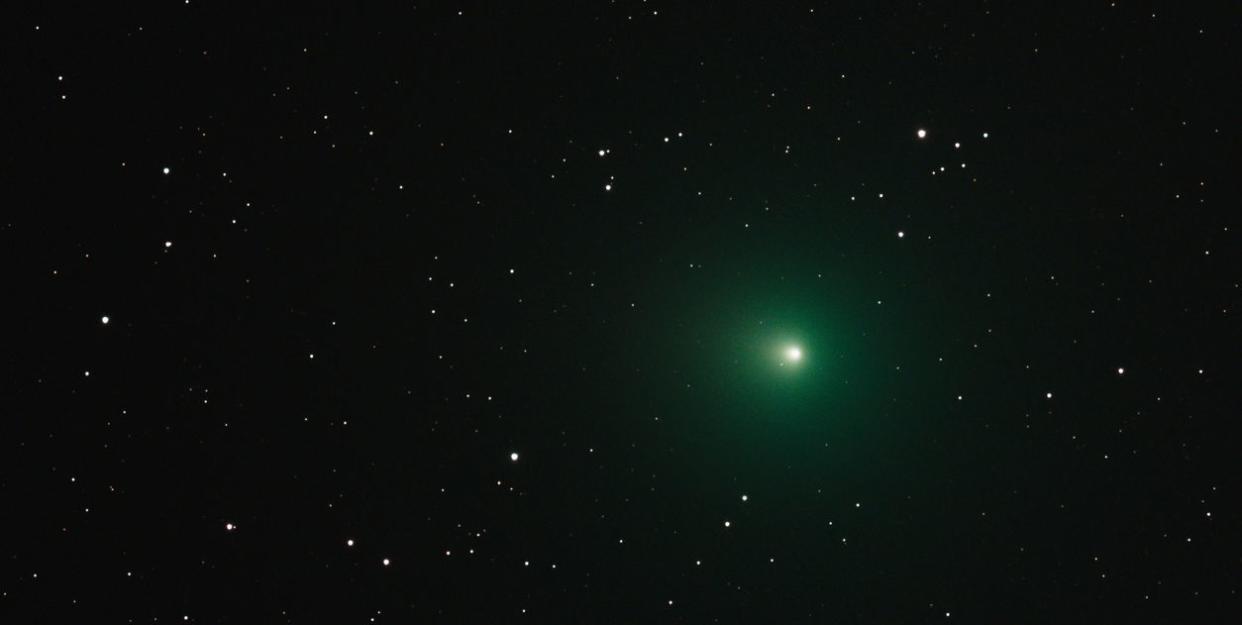Astronomers share photos of a bright, green 'Christmas' comet passing Earth

Stargazers and astronomers have been sharing mesmerising pictures of a three-quarters of a mile wide bright green comet passing close to Earth over the weekend.
As we reported last week, Comet 46P/Wirtanen made it closest approach to our planet in 70 years on Sunday, making it visible from Earth with the naked eye in particularly dark skies. And the solar spectacular really was a sight to behold.
A post shared by Astronomy Picture Of The Day (@astronomypicturesdaily) on Dec 16, 2018 at 7:30am PST
Astronomers had already reported seeing its green aura glow as far as Jupiter with a telescope in the last month. But as the comet completed its short 5.4 year orbit of the Sun on 12th December, it passed at 7.2 million miles or 11.7 million kilometres from Earth on 16th, lighting up the night sky in the northern hemisphere.
NASA shared the above image, taken by Danish photographer Ruslan Merzlyakov, as its Astronomy Picture of the Day.
"The kilometre-sized dirty snowball orbits the Sun every 5.4 years, ranging as far out as Jupiter and as close in as the Earth," the Space Agency explained.
A post shared by Photographer Göran Strand (@astrofotografen) on Dec 14, 2018 at 8:19am PST
"Today Comet 46P/Wirtanen passes within only 31 lunar distances to the Earth, the closest approach in 70 years. If you know where to look (Taurus), you can see the comet through binoculars as an unusual blue smudge.
"Pictured a week ago, Comet Wirtanen was photographed in the sky beyond an old abandoned church in Skagen, Denmark. The image composite also captures the astrophotographer."
A post shared by Torsten Richertz (@visuals.of.tr) on Dec 16, 2018 at 7:22am PST
Other astrophotographers also shared their stunning shots of Wirtanen, from as far flung Japan and Norway.
"After 16th, the comet will begin to fade as it recedes from the Earth and the Sun," NASA added.
Astronomers say the comet is a regular visitor to our Solar System, and was previously "the favoured rendezvous target" for the Space Agency's Rosetta Mission.
A post shared by A.Ohta (@aohta37) on Dec 16, 2018 at 9:25pm PST
If you missed out, there's plenty more to see in the northern winter night sky over the next few months. NASA has shared a handy guide, showing when to look up.
('You Might Also Like',)

